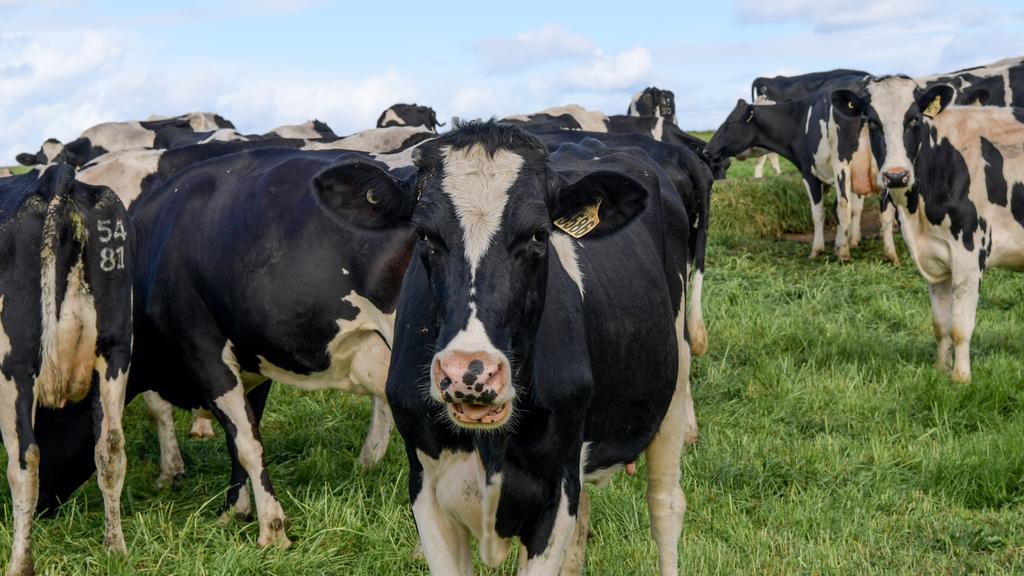
UW-Madison dairy experts Bob Cropp and Mark Stephenson sought to find a silver lining for dairy farmers during their May “Dairy Situation and Outlook” podcast this week, including an optimistic milk production forecast and an update on trade news.
Markets stayed relatively unchanged following the news that the Trump administration had lifted the tariff on steel and aluminum with its trading neighbors Canada and Mexico. While Cropp feels the lifting of retaliatory tariffs, especially on Mexico’s end is good for the U.S. cheese market, prices moved very little.
“Dry whey went up a penny, but both block and barrel cheese held while butter and powder stayed the same,” Cropp said. “With the production report out today, I wouldn’t be surprised to see some movement upward.”
Trade concerns
A prolonged trade feud with China, however, has yet to be resolved. In response to President Donald Trump’s decision to raise duties on $200 billion of Chinese product to 25% from 10%, China has retaliated by raising tariffs on $60 billion in U.S. goods.
“The tariff increases were worse on some agricultural products than others,” said Cropp, adding that U.S. whey exports to China are down half of what they were the last part of March. “There’s two factors impacting this: retaliatory tariffs and the fact that African Swine Fever has really hit the swine herd hard in China and they tend to buy less.”
On the flip side, China is purchasing about 13% more dairy products abroad…from New Zealand and the EU, Cropp said.
“It’s always a concern when we lose markets to somebody else,” he said. “Even if we resolve this trade feud, it may take awhile to get those markets back.”
Stephenson said international competition has raised the stakes in trade relationships.
“Using Mexico as an example, we may get some of those cheese sales back, but we may have to fight for those all over again,” Stephenson said. “We have to become once again the preferred provider and that’s not easy to do.”
Cropp said the EU has been very aggressive in trying to acquire more dairy trade, including attempts to strike new trade agreements with Mexico, Japan and South Korea—strong U.S. trade partners.
Milk production
Cropp says that national milk production in the last quarter of 2018 has grown less than 1%. Decreased production is helping to tighten the dairy product inventory, however, stocks still remain plentiful.
“I’m going to say that in the fourth quarter of this year that buyers will be wondering if they will have adequate access to product and we may start to see some bidding that gives us bigger price increases,” Stephenson said.
Cropp noted that even the USDA has lowered its forecast of milk production, estimating only a half percent increase for the year.
“Everything’s indicating to me a strengthening of milk prices for the rest of the year and a strong fourth quarter,” Cropp said.
Bleeding not done yet
While milk prices are climbing out of the cellar, Stephenson says the bleeding hasn’t stopped yet in rural America. A recent survey of Minnesota farmers provides a grim picture for dairy producers trying to hold on financially.
“The survey asked them about their access to credit and capital that they would need, and a high percentage of farms were simply being told ‘no more'”, he said. “So we aren’t done losing farms yet.”
Stephenson said Wisconsin took a big jump in the number of dairy farms fading from the rural landscape.
“We’re at an annual loss rate of about 9%,” Stephenson said. “Since January, we’ve lost 302 dairy farms in Wisconsin, and that’s just in a half year.”
Price forecast
Farmers may find a small measure of optimism in the rising milk prices. Cropp said that milk prices neared $16/cwt in April and reached $16.30/cwt this month.
“In June I am forecasting that we’re going to be in the $17/cwt range and keep increasing, with high $17/cwt in the forth quarter,” he said. “If things really tighten with the feed situation or exports improve, $18/cwt is a possibility.”
























